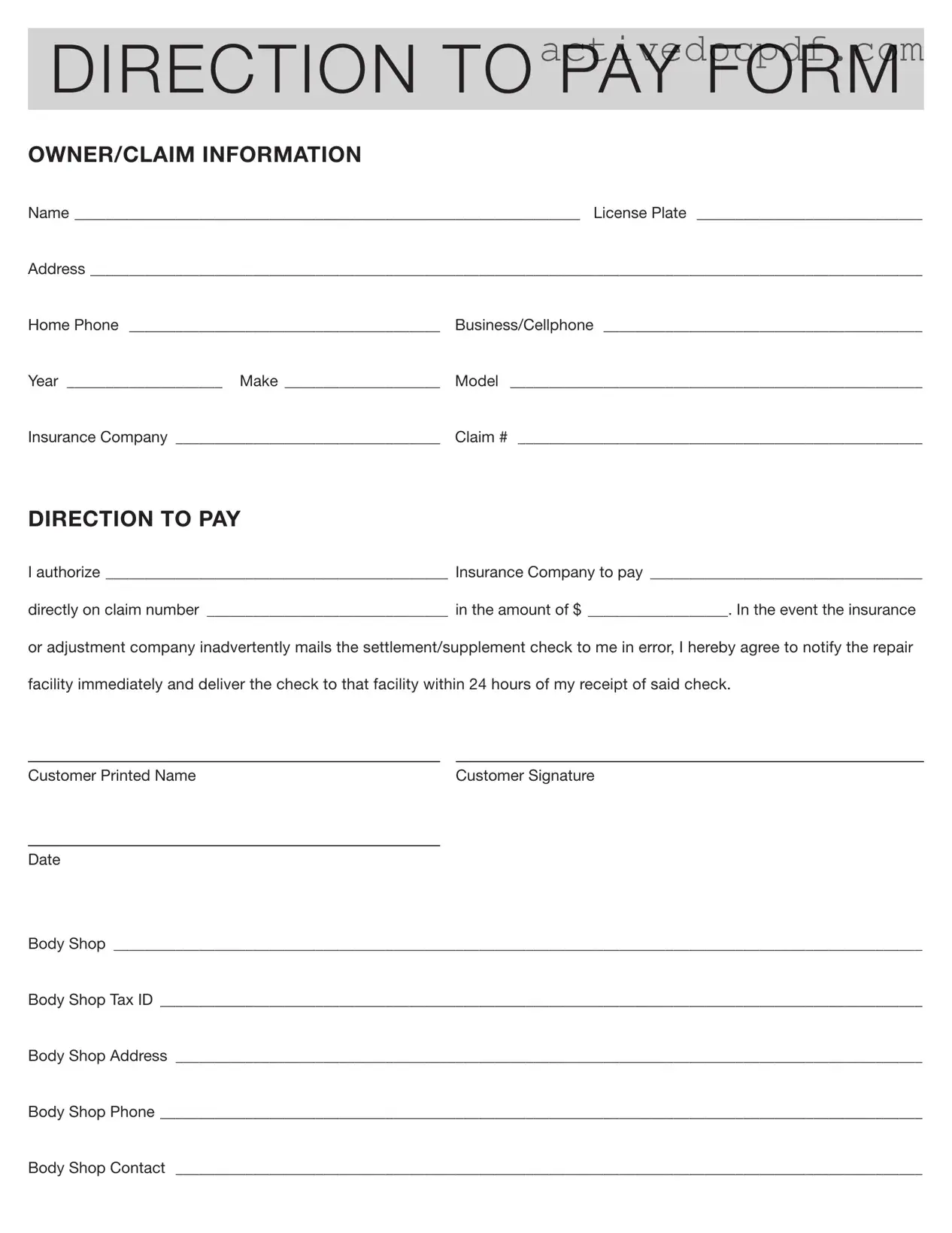The Authorization and Direction Pay form is designed to streamline the payment process between an insurance company and a repair facility. By completing this form, the owner of a vehicle authorizes their insurance company to pay the repair shop directly for services rendered. This helps ensure that payments are made promptly and reduces the likelihood of delays in repairs.
The vehicle owner must fill out the form. They will need to provide their personal information, including name, address, and contact details. Additionally, information regarding the vehicle, such as the license plate number, make, model, and year, is required. The form also requires details about the insurance company and claim number, ensuring that all parties involved are accurately identified.
What happens if the insurance check is sent to the vehicle owner by mistake?
If the insurance company inadvertently sends the settlement or supplement check to the vehicle owner instead of the repair facility, the owner is responsible for notifying the repair shop immediately. They must then deliver the check to the repair facility within 24 hours of receiving it. This ensures that the repair process can continue without unnecessary delays.
Yes, the Authorization and Direction Pay form is a legally binding document once signed by the vehicle owner. By signing the form, the owner agrees to the terms outlined, which include authorizing the insurance company to pay the repair facility directly. It is important for the vehicle owner to read and understand the form before signing, as it establishes a financial obligation between the parties involved.
The Authorization and Direction Pay form is typically available at auto body shops or can be requested directly from your insurance company. Many repair facilities also provide the form on their websites for easy access. If you are unsure where to find it, contacting your insurance agent or the repair shop can help you obtain the necessary documentation.
